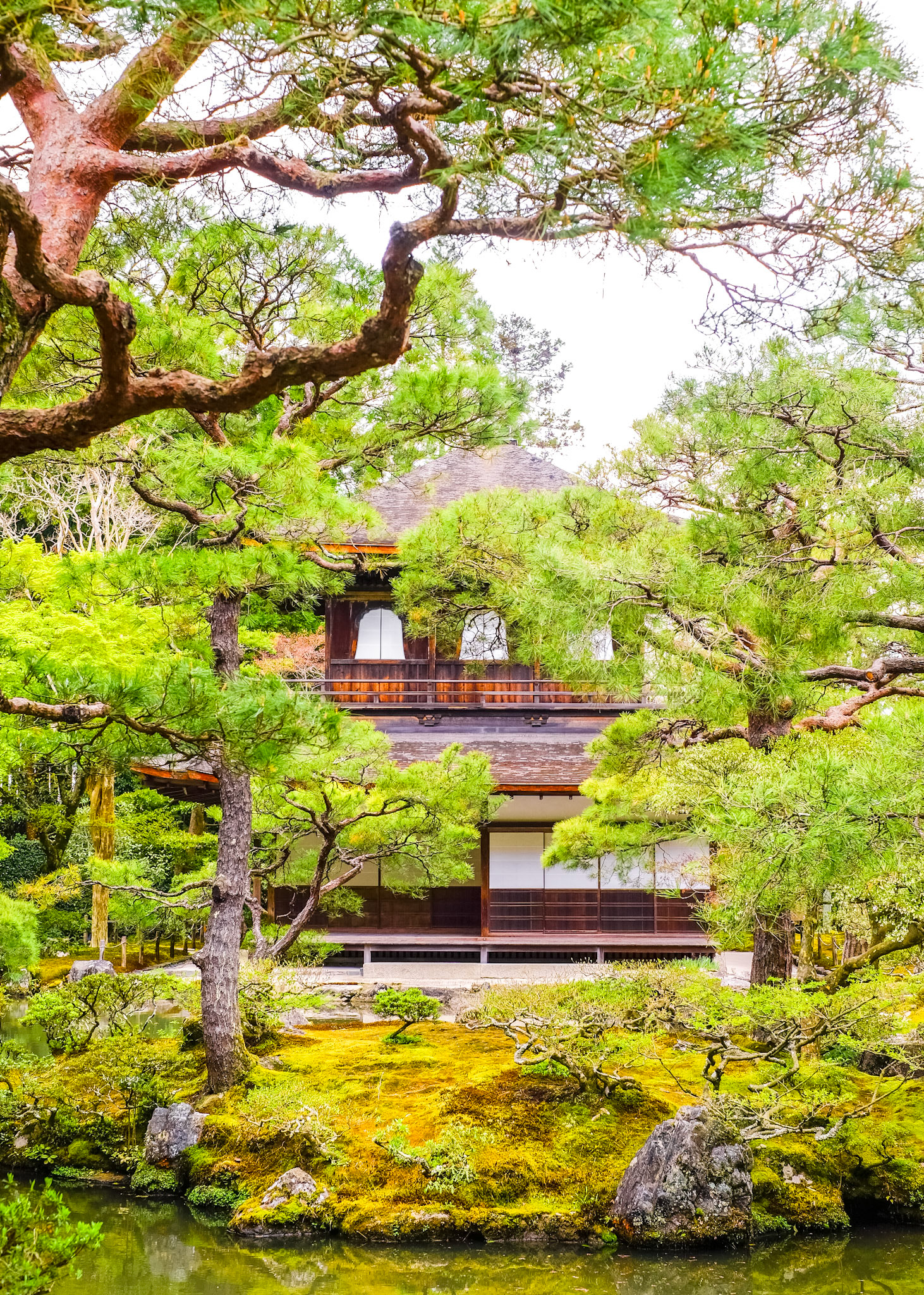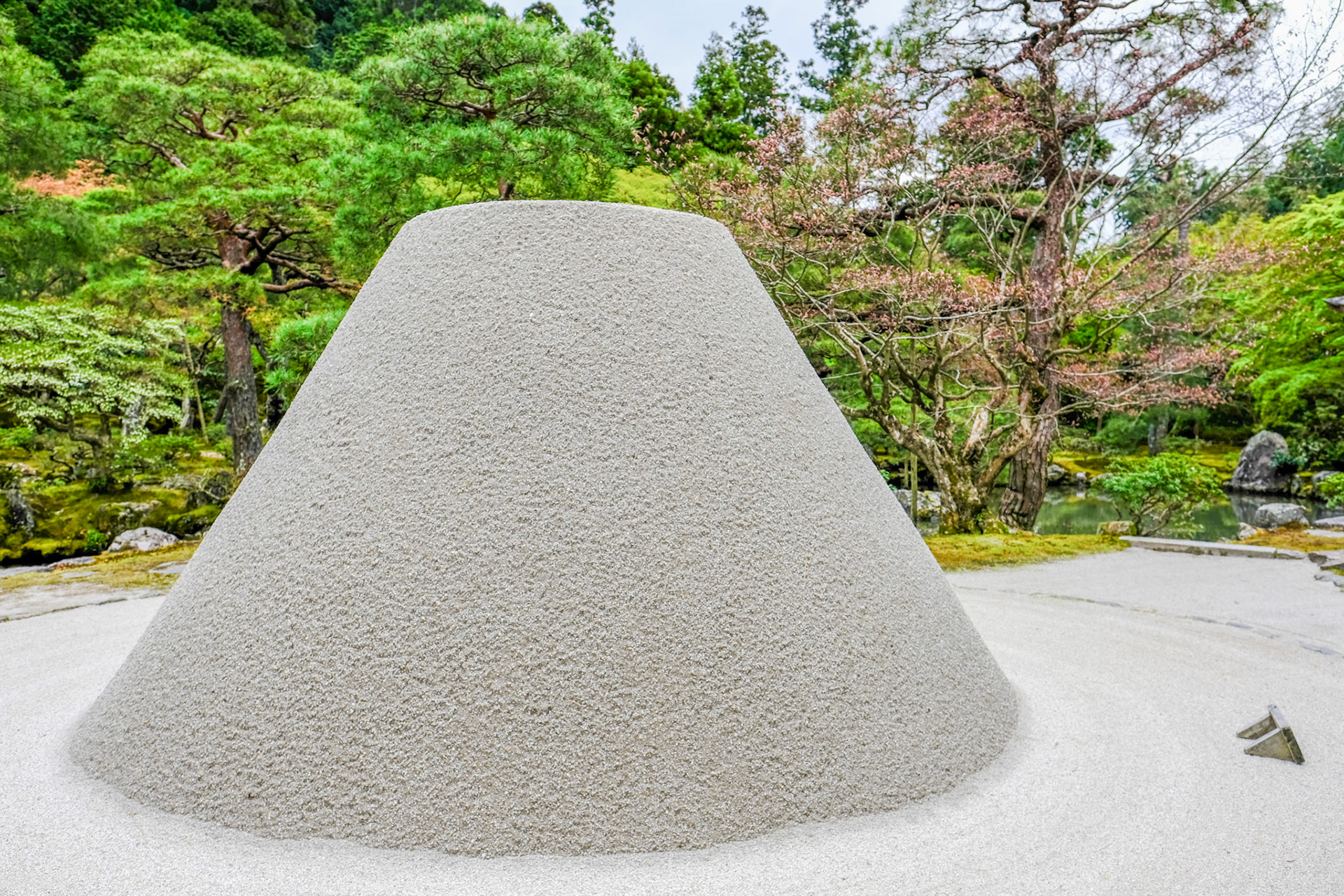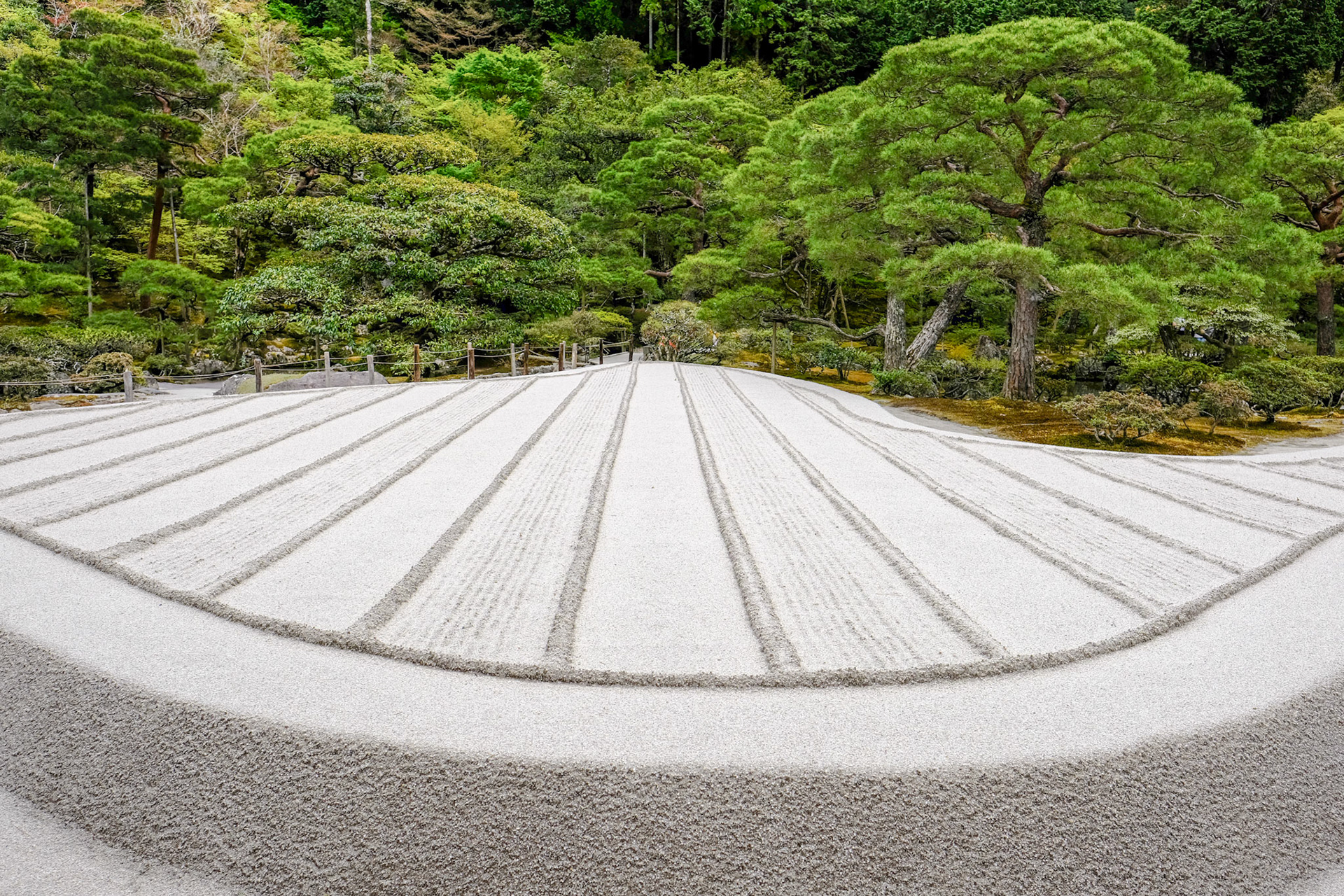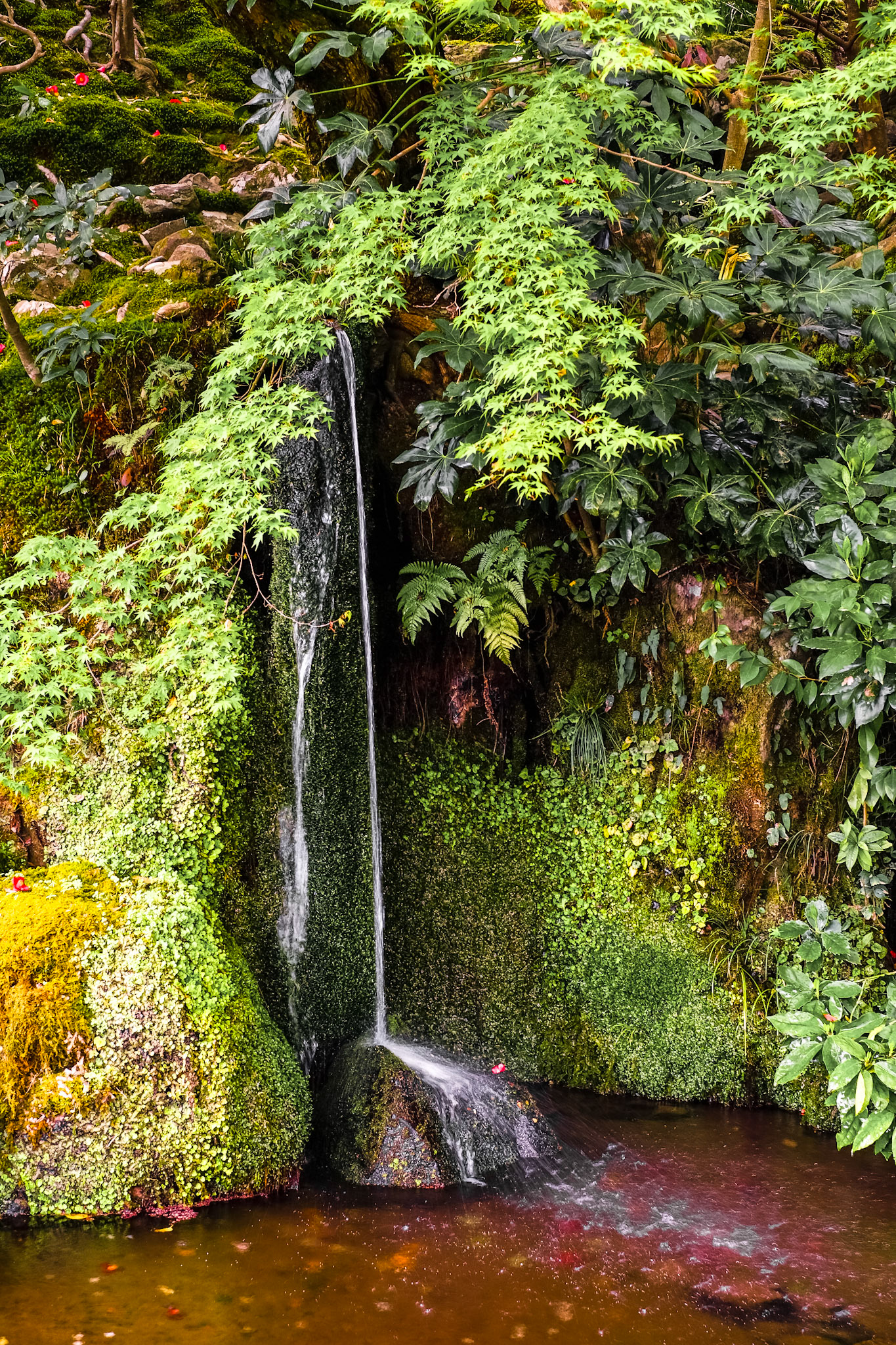Ginkaku-ji, also known as the Silver Pavilion, is a Zen temple in Kyoto. Officially named Jisho-ji, the temple was constructed in 1482 as his retirement villa by Ashikaga Yoshimasa, the grandson of the founder of Kinkaku-ji. Following his death in 1490, it was converted into a Zen temple.
Ginkaku-ji is renowned for its understated elegance and its harmonious blend of architecture and nature. The Silver Pavilion (Kannon-den) was never adorned with silver foil, embodying the principles of wabi-sabi, which finds beauty in simplicity and imperfection. The 8 meters long and 7 meters wide silver pavilion has 2 stories. The ground floor has a beautiful view of the garden and was used for meditation.

Silver Pavilion

Silver Pavilion and lake
The surrounding gardens are a masterpiece of Japanese landscape design, featuring a dry sand garden and a beautiful moss garden with its lush greenery and tranquil ponds. The Gishadan, the Silver Sand See, features a 2 meters high cone of sand, called Kogetsudai, meaning "moon viewing platform" .

Kogetsudai (moon viewing platform) at Ginkaku-ji

Ginsha-dan

Sengetsu-Sen, the moon washing waterfall
You may also like